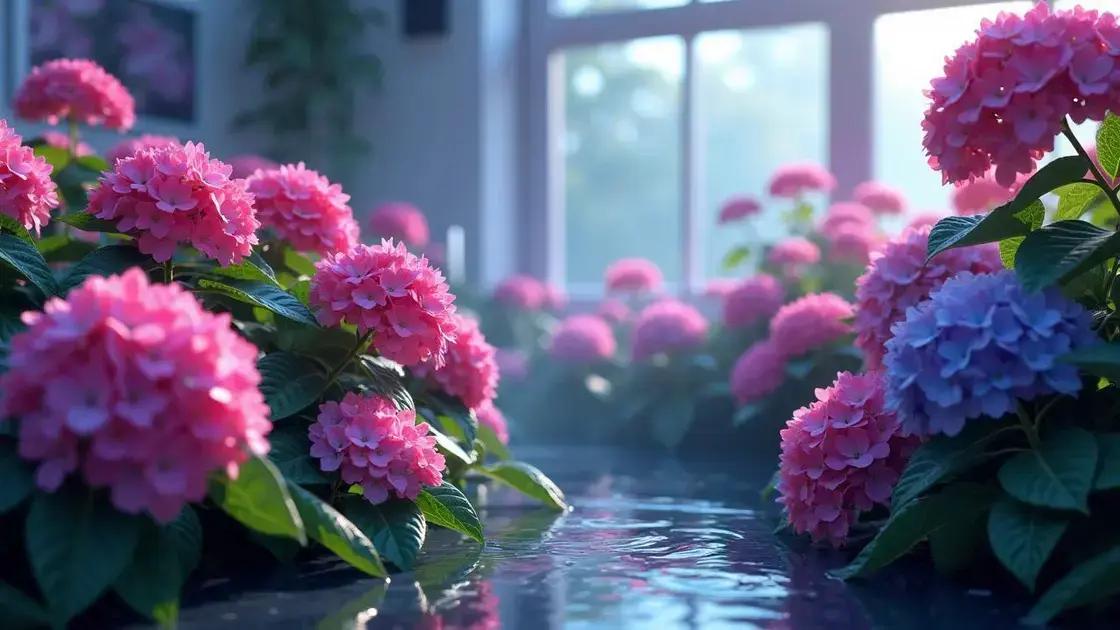How to Take Care of Indoor Hydrangea Plants: 7 Essential Tips for Success
How to take care of indoor hydrangea plant effectively can seem challenging, but with the right knowledge, anyone can cultivate these stunning plants. Imagine vibrant blooms filling your home, elevating your indoor space while also providing a sense of tranquility. Let’s dive into the essential tips and tricks that will turn a novice gardener into a hydrangea expert.
Table of Contents
ToggleOptimal light conditions for indoor hydrangeas
Optimal light conditions for indoor hydrangeas are crucial for healthy growth and vibrant blooms. Hydrangeas thrive best in specific lighting conditions, and adjusting these can significantly enhance their beauty. Here are some important aspects to consider for optimal light:
- **Indirect sunlight**: Hydrangeas prefer bright but indirect sunlight. Direct sun can scorch the leaves, leading to wilted plants.
- **Ideal location**: Place your indoor hydrangea near a window that receives filtered light. East-facing windows are often ideal.
- **Light duration**: Aim for about 5 to 6 hours of indirect sunlight each day to keep your hydrangeas thriving.
For those growing hydrangeas indoors, understanding their light requirements is essential. Here are a few tips to ensure your plants receive the right amount of light:
- **Rotate Plants Regularly**: To ensure even growth, rotate your hydrangea every few weeks. This helps prevent one side from leaning towards the light.
- **Watch for Signs of Stress**: Keep an eye out for yellowing leaves or leggy growth, which can indicate your plant isn’t getting enough light.
- **Consider Grow Lights**: In low-light environments, using full-spectrum grow lights can mimic natural sunlight and support healthy growth.
Many new gardeners may be unaware of how light impacts flowering. Adequate light not only keeps the leaves lush but also promotes blooming. To help you visualize the impact of light on indoor hydrangeas, here’s a quick comparison:
| Light Condition | Effect on Hydrangeas |
|---|---|
| Bright Indirect Light | Thriving growth with vibrant blooms |
| Direct Sunlight | Scorched leaves, wilted flower buds |
| Low Light | Leggy growth, fewer blooms |
Conclusion: Maintaining optimal light conditions for indoor hydrangeas will significantly impact your gardening success. Whether you are a beginner or seasoned gardener, understanding these fundamentals can help you achieve a flourishing indoor garden. For more tips on indoor gardening, exploring indoor gardening techniques can greatly enhance your skills.
Watering techniques to boost indoor hydrangea health

Watering techniques to boost indoor hydrangea health are essential for ensuring robust growth and stunning blooms. Proper hydration plays a crucial role in maintaining the vibrancy of your hydrangea plants. Here are some effective watering strategies:
- **Consistent moisture**: Indoor hydrangeas prefer consistently moist soil, but not waterlogged conditions.
- **Watering frequency**: Adjust your watering schedule based on environmental conditions, typically every 2-3 days during the growing season.
- **Check soil moisture**: Before watering, check the top inch of soil. If it feels dry, it’s time to water.
Understanding how to water your hydrangeas effectively is vital. Here’s a step-by-step guide to smart watering practices:
- **Use room temperature water**: Cold water can shock the roots. Allow water to sit at room temperature before applying.
- **Water deeply**: When you water, ensure that it penetrates deeply into the soil to encourage root development.
- **Avoid overhead watering**: Watering at the base of the plant minimizes moisture on the leaves and reduces the risk of fungal diseases.
Maintaining a proper watering routine is crucial for indoor hydrangeas. Many gardeners find that the time of year significantly influences their watering practices:
| Season | Watering Frequency | Soil Moisture Tips |
|---|---|---|
| Spring/Summer | Every 2-3 days | Keep consistently moist without overwatering |
| Fall/Winter | Every 5-7 days | Allow top inch to dry out between waterings |
Remember, the aim is to balance moisture levels for optimal health. Do not let your plants sit in water; good drainage is equally important. For further insights and to improve your indoor gardening skills, consider exploring indoor gardening techniques.
Fertilizing tips for thriving indoor hydrangeas
Fertilizing tips for thriving indoor hydrangeas are vital for keeping your plants lush and vibrant. Understanding how to properly nourish your hydrangeas with the right fertilizers can lead to spectacular blooms and healthy growth.
- **Choose the right fertilizer**: A balanced fertilizer with equal parts nitrogen, phosphorus, and potassium (N-P-K) is ideal.
- **Timing is key**: Fertilize during the growing season, typically in spring and summer, to support new growth.
- **Frequency of application**: Apply every 4-6 weeks for best results, but reduce frequency in winter.
Here are some essential steps for effective fertilization:
- **Dilute your fertilizer**: Always follow the manufacturer’s instructions to avoid over-fertilization.
- **Feed when the soil is moist**: Fertilizing on dry soil can damage roots, so ensure the soil is slightly damp.
- **Monitor plant health**: Keep an eye on your plants for signs of nutrient deficiency, such as yellowing leaves.
Using the right methods ensures your indoor hydrangeas receive the nutrients they need. Below is a quick reference table summarizing the best practices for fertilization:
| Fertilization Aspect | Recommendation |
|---|---|
| Type of Fertilizer | Balanced 10-10-10 or similar |
| Application Frequency | Every 4-6 weeks during growth season |
| Best Conditions | Moist soil during application |
By following these fertilizing tips, your indoor hydrangeas can thrive beautifully. For a deeper dive into enhancing your indoor gardening skills, consider exploring indoor gardening techniques to further elevate your plant care practice.
In conclusion
Caring for indoor hydrangeas requires knowledge of their specific needs, including optimal light conditions, appropriate watering techniques, and effective fertilization strategies. By following these guidelines, you can ensure your hydrangeas thrive, producing stunning blooms and vibrant foliage.
Remember to monitor your plants regularly and adjust your care routine as needed. For further insights into enhancing your indoor gardening experience, check out these tips on enhancing your indoor garden.

